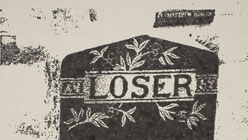Pretty much everyone says that you do need an agent if you want your book to be published by a large house. How do you find an agent? Try putting a list of search terms related to your book into Google with the word “agent” and see what you get. For example, here is a list of agents I found using the terms “memoir & agent.” You can also look on the Poets & Writers website under the Agents tab. I found the agent who represents Lynda Barry there. Lynda Barry wrote What It Is, a book that sounds like it might be more similar to your project than not, so even though most of the agents listed at P&W work with fiction, you might find a few who are a good match.
How committed to this project are you? A large publishing house isn’t the only way to go — just ask Edward Tufte, who specializes in visual information. When he couldn’t find a publisher willing to create The Visual Display of Quantitative Information to his specifications, he formed his own publishing imprint and has gone on to publish four other books (all lovely, by the way — I own the set). Of course, doing it yourself requires not just time but also a potentially sizeable investment of money as well. And after you publish the book, you’ll also have to market it. I found some ideas on marketing here.

Edward Tufte’s The Visual Display of Quantitative Information (Graphics Press is Tufte’s own imprint); Image: Iwan Gabovitch’s Flickr photostream.
Self-publishing is a grand undertaking, and you’ll want to visit with printers and binders in your area to talk with them about materials, costs, file sizes, and production time. If you’re not familiar with publishing software, you may also need to hire a graphic designer to help you scan and lay out the images and text of the book using a program like InDesign.
If you hand your manuscript over to a publisher, you lose some creative control but will be more or less free to move on to the next project. If you publish it yourself, you will live and breathe this book for quite some time, but you can make exactly what you want. Good luck! In my opinion, the world needs more books about what it means to be an artist.

Nate Lowman, Loser, 2009.
I recently discovered an artist’s work that is a little too similar to mine for comfort. This artist is more established than I am and has probably been making this kind of work longer than I have, but I am committed to the work and don’t really want to change. To complicate matters I have an exhibition coming up and all the work for the show is finished. I don’t want to be accused of plagiarism or written off as an imitator, especially because I made the work in complete ignorance of this other artist. What should I do?
First things first: I believe you. It’s depressing to find out that you’re not a lone genius producing quality original artwork, but it does happen. Even with a high level of education in art history and a commitment to following the contemporary art scene, one can’t be aware of every individual artist’s work. Well, not, that is, until a well-meaning friend forwards an email with a link, saying “I saw this work and thought of yours!” Hey, thanks.
You say that having work finished for an upcoming show complicates the matter. Is that really true? If you hadn’t completed this body of work, or if the opening was a year from now, would you have thrown your ideas away and changed your work? The implication is that you would have taken another direction, but I’m not convinced that this would be a beneficial course of action. Why? Because there are a lot of factors that must have influenced your decisions as you were making this work, and I believe in following your lights to their logical and emotional conclusions.
You’re also discounting the shared forum of culture and the uncontrollable effects of zeitgeist. I’m not really sure what the specific factors are that compel everyone to have the same impulse at the same time, but it happens. Art communities are relatively small (even the global contemporary art community) and we’re all reacting to the circumstances of our shared epoch. Isn’t it natural that there is at least some degree of material or conceptual overlap if we are facing some of the same pressures and inspirations?

L-R: William Shakespeare, John Keats, Alfred Tennyson.
Your question also calls up the ghosts of antiquated arguments about art, authorship and originality. It’s likely that you and this other artist are both reacting to artwork that preceded your own. The Anxiety of Influence by Harold Bloom discusses this subject in relation to poetry. “‘Influence’ is a metaphor, one that implicates a matrix of relationships — imagistic, temporal, spiritual, psychological — all of them ultimately defensive in their nature,” writes Bloom. “Without Keats’s reading of Shakespeare, Milton, and Wordsworth, we could not have Keats’s odes and sonnets and his two Hyperions. Without Tennyson’s reading of Keats, we would have almost no Tennyson.” So while you may not have known about this other artist’s work, you both are probably acquainted with a common ancestral body of work that inspired your own. That’s how artistic lineage is created: we react to what came before.
You’ve finished the work and it’s time to hang it, evaluate it, and move on. If you get it up on the gallery walls and you’re pleased, continue pushing your ideas; if you’re not, take some time to assess your goals for the work and determine what’s successful and what’s not. And if anyone accuses you of plagiarism or imitation, just smile and say, “Yes, I just found out about Artist X. A friend sent me a link to her work.”






